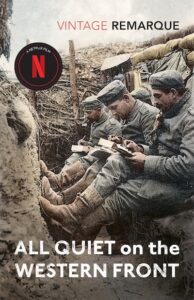Whether prohibited by governments or by religious authorities, certain books have faced prohibition over the decades and centuries. Various forms of censorship – sometimes with extreme penalties and lasting for years – have thwarted reader access to these works.
This month in the USA, celebrating the 1st amendment of the Constitution, libraries and bookshops are celebrating Banned Books week, an annual celebration of the freedom to read. The event is sponsored by a coalition of organisations dedicated to free expression and endorsed by the Center for the Book in the Library of Congress.
We have combed our catalogue and our libraries to find notable examples of books that have been banned, or even destroyed, with reasons given for this extreme form of censorship.
Lolita by Vladimir Nabokov, 1955 – banned in Canada (1958), the UK (1955-1959), South Africa (1955-1994) and France (1956-1958) for allegations of pornography.
Lady Chatterley’s Lover by D H Lawrence, 1929 – banned in Australia (1929-1965) and the UK (1929-1960) for allegations of obscenity.
Animal Farm by George Orwell, 1946 [B0071] – banned in some states of the USA for alleged communist sympathy.
Brave New World by Aldous Huxley, 1932 [B2131] – banned in Ireland (1932-1967) for allegations of sexual promiscuity.
The House of the Spirits, by Isabel Allende, 1982 [B1176] – banned in Chile (1982-1990) for allegations of political subversion. Allende’s father’s cousin was the democratically elected president of Chile, assassinated in the military coup that ushered in the Pinochet regime.
Books banned in China:
During the Cultural Revolution (1966-1976), many books from the western literary canon were banned in China. Two notable examples:
- Jane Eyre by Charlotte Bronte, 1847 [B0024] – banned for allegedly corrupting youth.
- Alice in Wonderland by Lewis Carroll, 1865 [B0430] – banned for depicting animals as complex as human beings.
If you have not already read it, we highly recommend Balzac and the Little Chinese Seamstress by Dai Sijie, 2001 [B1671], a beautiful book (and film) set in China during this period, about the liberating power of books even in the most oppressive circumstances.
Books banned in Nazi Germany:
Many books were not just banned but actively sought out for burning. Two notable examples:
- Oliver Twist by Charles Dickens, 1839 – banned for including Jewish characters.
- All Quiet on the Western Front by Erich Maria Remarque, 1929 [B0101] – banned for anti-war sentiment.
If you have not already read it, we highly recommend The Boy in the Striped Pyjamas by John Boyne, 2012, a beautiful book (and film) set in Berlin during the Second World War, a child’s view of the Nazis’ treatment of Jewish people.
What is the most widely banned book?
The Satanic Verses by Salman Rushdie, 1988 – banned in Pakistan, Egypt, Indonesia, Iran, Kenya, Kuwait, Liberia, Malaysia, Nepal, Papua New Guinea, Senegal, Singapore, Sri Lanka, Tanzania and Thailand for allegations of blasphemy against Islam. In most of these countries, the book is still banned.
Further reading
This interesting article examines several thought-provoking and better-known books that continue to cause controversy in certain quarters.
Contrast it with this article, which highlights a different form of censorship, involving revisionist editions of previously published works by publishers wishing to remove offensive elements from the writing of Virginia Woolf, Enid Blyton, Agatha Christie, Ernest Hemmingway, Raymond Chandler, P G Woodhouse, and Roald Dahl.
In addition, the State Library of Victoria has compiled a video on banned books to mark Banned Books Month, presented by former Principal Librarian, History of the Book and Arts, Des Cowley.
Have you read these other books, all considered classics, which have been banned at one time or another: The Prince (Machiavelli), Candide (Voltaire), Lysistrata (Aristophanes), Madame Bovary (Flaubert), Ulysses (Joyce)?











